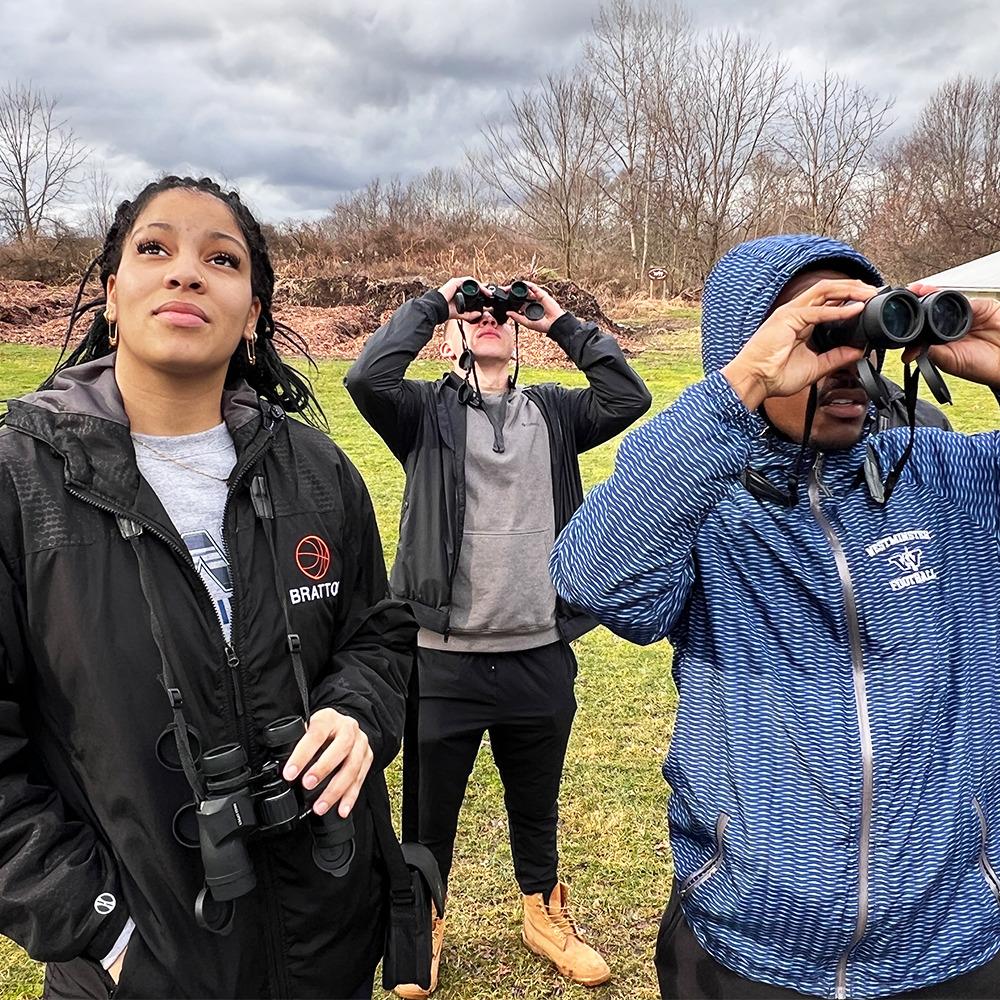Students Present Research at Physics Conference
Posted on Tuesday, October 3, 2006
Three Westminster College students presented their research at the meeting of the Western Pennsylvania Section of the American Association of Physics Teachers.
The event, which was hosted by Westminster College Sept. 30, featured Carl Landis, a 1976 Westminster graduate from Comprehensive Physics and Regulatory Services, Ltd. Landis introduced the audience to the various aspects of the medical physics profession, including: education, responsibilities, qualifications, the market shortage, and salary.
"Medical physics is a profession that is not well known," according to Landis. "However, physicists have been involved in the medical application of radiation since the 1920s. Today, there are at least 4,000 practicing medical physicists in the United States. The need for more qualified medical physicists is great."
Bernard Durkin, director of the Science in Motion Program at Westminster College, introduced this program to attendees. "Science in Motion is an outreach program which seeks to improve science education at the elementary, middle school, and high school by providing a more realistic laboratory experience for students." Durkin provided a brief history of the program and demonstrated how Westminster does this, both in terms of professional development for teachers and by working with students in schools. Visit www.westminster.edu/sim for more information.
Students presenting their research at the meeting included:
Mercer, PA
Jacob Flickinger is a son of John and Deborah L. Flickinger. Flickinger, a senior physics major, is a graduate of Mercer High School.
Abstract:
Bullet Propulsion in Contemporary Films
When watching a movie, usually the bad guys will do one of two things when they are shot by the good guys; the person being shot will be propelled backward a huge distance or will hardly move at all. To determine the accurate depiction, I calculated exactly how much momentum transfer would occur between a bullet and the person being shot. From two different movies showing the two different extremes (one movie had the man being shot fly backwards a very large distance and the other movie had the man being shot hardly budge an inch) I fully expected the truth to be some moderate phenomena. I will show two movie clips with the simple momentum transfer problem worked out with actual data values. I will display the results of what would really happen in that situation plus what is needed to cause what happened in the movie. This could be an excellent lab or demonstration for entry level physics classes because the calculations are very simple and the results very interesting since they can deal with current movies and current actors.
Canfield, OH
Lisa Gayetsky is a daughter of Mark and Barbara Gayetsky. Gayetsky, a junior physics major, is a graduate of Canfield High School.
Abstract:
What do you mean every magnetic force isn't inverse-square?
Introductory physics students often do not understand the nature of the force between two permanent magnetic dipoles and assume it to be an inverse square relationship (if they think about it at all). We describe a simple experiment, requiring only common laboratory supplies, which can demonstrate the 1/r4 relationship by measuring the change in the reading of a triple-beam balance due to the force exerted by one magnet on the other. The experiment can also demonstrate the force between a permanent magnet and the induced magnetization in a ferromagnetic material, which is described well by 1/r7 relationship.
Cary, IL
Michele Fenske is a daughter of Craig Fenske and Diane Fenske, Mayfield Village, OH. Fenske, a senior physics major, is a graduate of Mayfield High School.
Abstract:
Programming a Flexible Needle Steering System for Percutaneous Access to Deep Zones
of the Brain
I will describe a minimally invasive flexible needle-steering system with three dimensional proportional motion and access to deep areas of the brain. The design is based on the inherent bending of a beveled-tip needle when passed through tissue as well as its ability to travel in a straight trajectory when rotated with a constant RPM. Proportional control is gained through a variation of duty cycles. Possible applications of this system include catheter-based therapy delivery within the brain and navigation around critical cerebral structures to reach deep zones within the brainstem, thalamus or other subcortical regions, all with minimal trauma to surrounding structures. The system is controlled through a joystick and simple three-level switch or a preprogrammed path. I will show the entirely computerized programming interface developed for flexible needle steering using this system.
Contact Dr. Samuel Lightner, Westminster chair and professor of physics, at (724) 946-7204 or e-mail lightner@westminster.edu for more information.
More Stories



